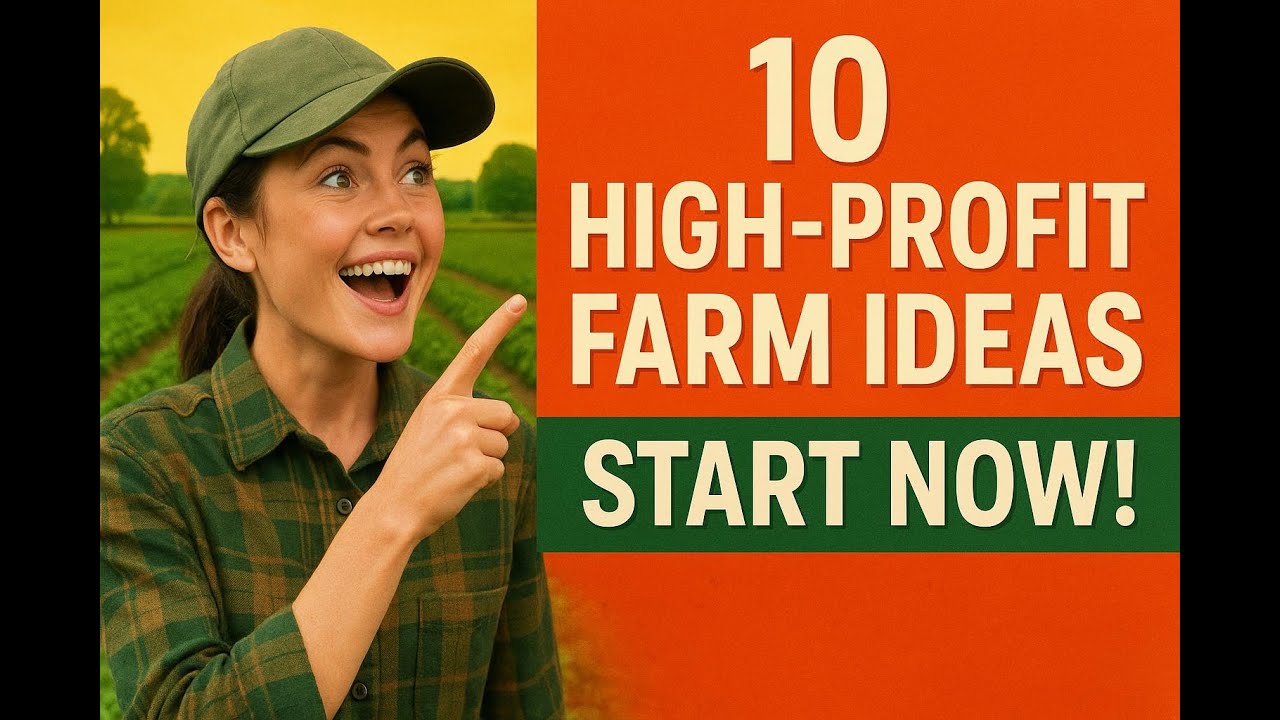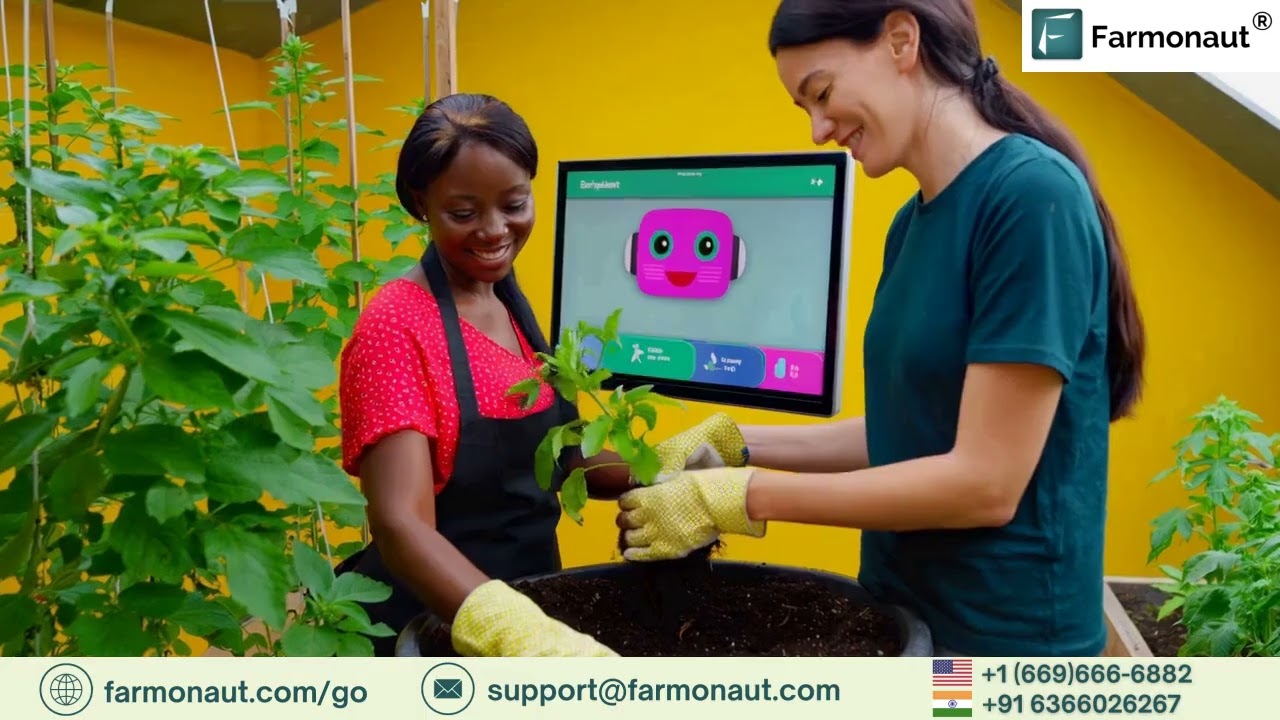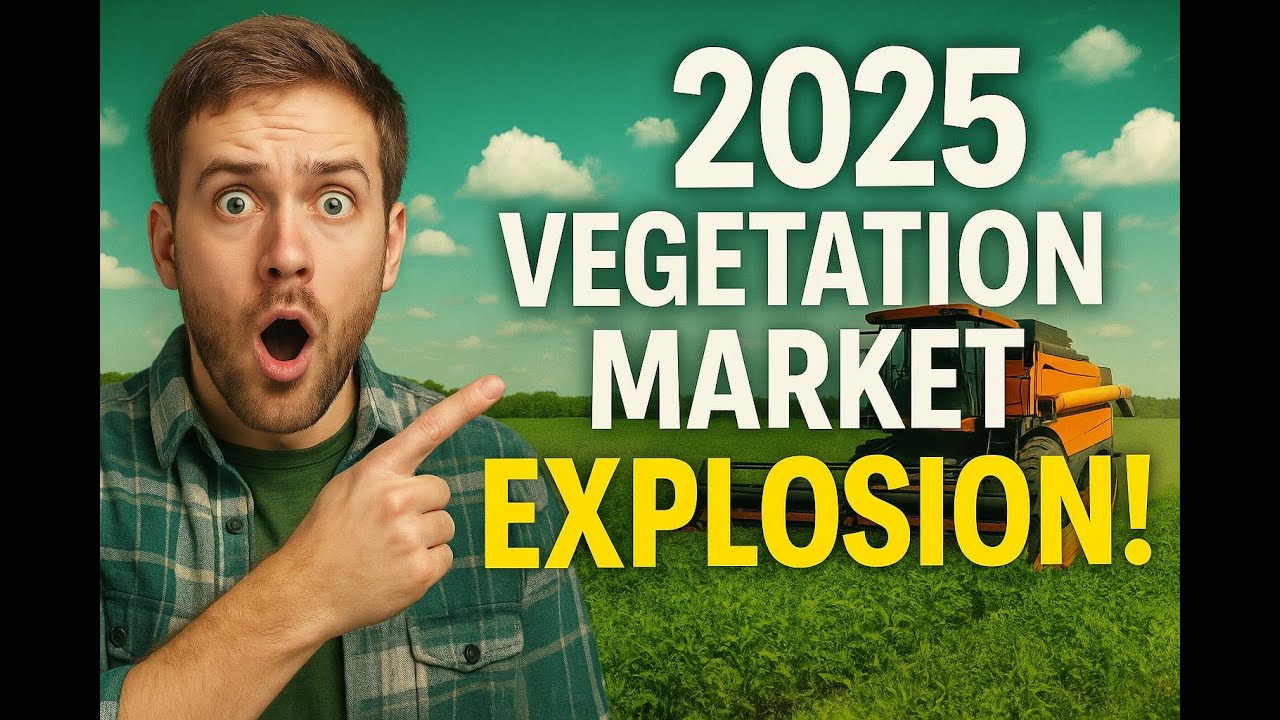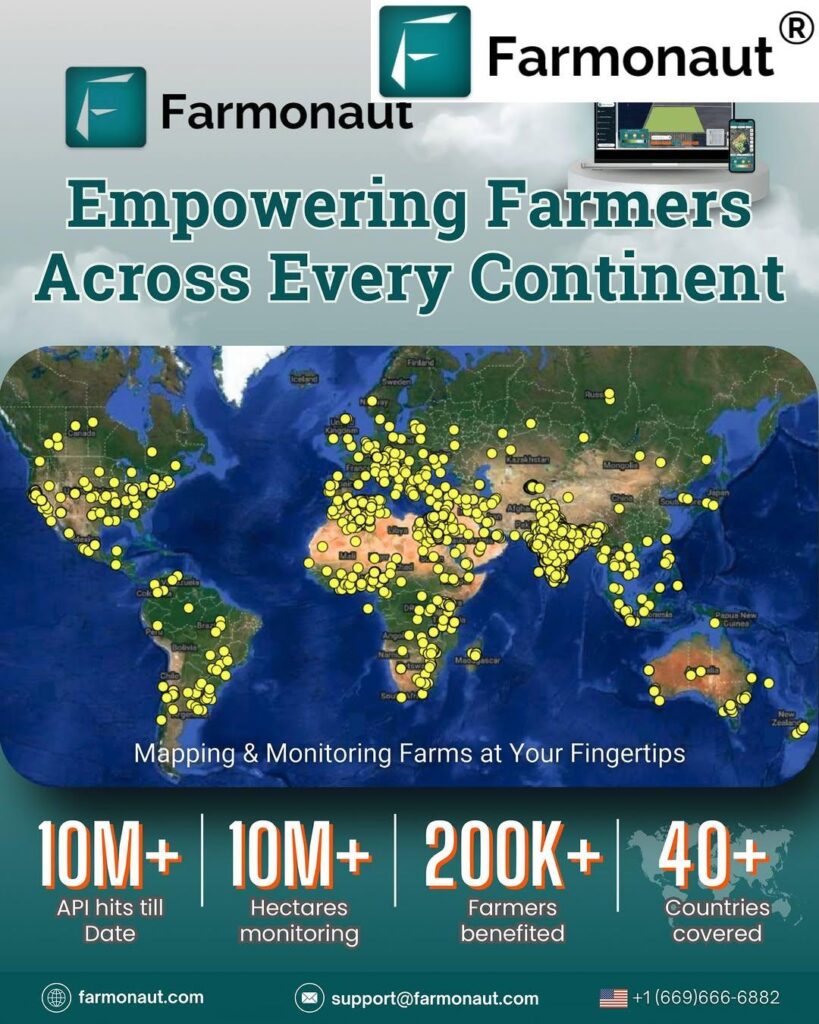Meta Description: Urban gardening products are bridging farming vs gardening in 2025, with organic gardening and technological innovation revolutionizing sustainable food systems in modern cities.
Table of Contents
“Urban gardening products are projected to power 35% of city-grown produce by 2025, transforming local food availability.”
Urban Gardening Revolution 2025: At a Glance
In recent years, urban gardening products have emerged as essential tools for city dwellers, driving a movement that bridges the gap between farming and gardening in our technologically advanced, ever-evolving urban environments. As the world population urbanizes, green spaces in cities continue to shrink, and the need for innovative food systems becomes increasingly urgent.
This revolution is not just about growing plants – it’s about creating resilient, sustainable food systems. By 2025, we’ve seen advancements in products such as hydroponic kits, smart planters, AI-driven environmental sensors, and organic gardening supplies, which are fundamentally restructuring the way individuals and communities produce food in cities. Now, urban gardening is not just a trend – it’s a necessity.

Why Urban Gardening Products Matter
Supply fresh, nutritious food directly in the city, reducing reliance on complex supply chains and long-distance food transport
Encourage sustainable systems by promoting organic gardening and reducing environmental impact
Empower cities and communities to regain control over their food security
Bridge the gap between farming and gardening through innovation, accessibility, and education
Farming vs Gardening: Differences and the 2025 Urban Shift
To truly appreciate the rise of urban gardening products in 2025, we need to understand farming vs gardening. While the two share fundamental goals – cultivating plants to produce healthy, nutritious food – their approaches, scales, and structures differ, especially as we move into modern urban landscapes.
Key Differences: Gardening vs Farming
Scale:
Farming typically occurs on expansive, rural lands dedicated to commercial-scale production of crops/food. Gardening is smaller in scope, often taking place on balconies, rooftops, courtyards, or community gardens.
Space & Location:
Farming uses large plots in rural settings. Gardening leverages the limited, confined spaces available within urban environments.
Yield:
Farms focus on maximizing yield for commercial sale; gardens emphasize accessibility, freshness, and family/community consumption.
Methods & Practices:
While traditional farming employs machinery and chemical interventions (although this is changing), urban gardening integrates organic gardening and advanced products (such as hydroponic kits and AI sensors).
Sustainability:
Urban gardening often prioritizes sustainability and organic gardening and farming techniques, while traditional farming is sometimes driven by maximizing output and efficiency.
In 2025, these differences blend with the rise of urban gardening products, which allow individuals to cultivate a variety of crops on any scale, using minimal space, water, and inputs.

Urban Gardening Products: The Modern Approach
Enable city dwellers to grow their own food on balconies, rooftops, and even indoors.
Include smart planters, modular vertical gardening systems, organic soil mixes, composters, and AI-based sensors.
Facilitate sustainable systems that can supplement or complement food produced by traditional farms.
Result: The distinction between farming vs gardening is becoming increasingly blurred, with urban gardening products empowering everyone to participate in the local food system.
2025: Cities That Grow
In 2025, city gardens, rooftop farms, and vertical green walls are as integral to the urban landscape as office buildings. Gardening vs farming is less a question of scale and more about accessibility, innovation, and sustainability.

“By 2025, organic gardening tools adoption in cities will surge by 50%, bridging modern farming and gardening practices.”
Organic Gardening and Farming in Urban Spaces
The shift towards organic gardening and farming has become fundamental to urban gardening products in 2025. As consumer awareness of health, environmental issues, and food quality rises, the demand for locally-grown, pesticide-free food is at an all-time high.
Why Organic Practices Are Pivotal
Reduce exposure to harmful chemicals for individuals and communities
Support biodiversity and soil health, even in small urban spaces
Enable sustainable growth and ecosystem regeneration
Increase the nutritional value and freshness of produce
Key Organic Urban Gardening Products
Organic soil mixes: Designed specifically for container and rooftop gardening, provide essential nutrients and healthy soil structure in confined environments.
Natural pest repellents: Such as neem oil sprays, garlic chive extracts; eco-friendly combatants to urban pests and diseases.
Biodegradable pots and planters: Made from materials like compressed coconut coir, recycled paper, or bamboo – reduce plastic waste and promote sustainability.
Compact composting systems: Designed for balconies or kitchen corners to recycle organic kitchen waste into nutrient-rich compost for gardens.
Automated irrigation systems: Reduce water usage while maintaining steady hydration – essential for organic growth in limited space.
By integrating these products, urban gardeners can maintain organic standards, support healthier ecosystems, and produce nutritious, fresh food directly at home.

Benefits of Organic Urban Gardening Products:
Improved soil fertility in urban gardens through compost and rich organic amendments
Zero-synthetic input methods that help promote pollinator health and urban biodiversity
Enhanced resilience to pests and diseases through balanced, organic practices
Support for circular food systems – compost your kitchen waste into garden nutrients
For those looking to take their urban gardening to the next level, organic techniques not only reduce environmental impact, but also deliver superior taste, nutrition, and community well-being.
Explore more about traceability and how you can ensure organic standards using blockchain traceability tools from Farmonaut which empower growers and consumers to verify the journey and quality of their food.

Breakthroughs in Urban Gardening Products: Technology & Sustainability
As technology continues to advance, urban gardening products are transforming food production in cities and addressing challenges traditional farming cannot.
Innovations Shaping Urban Food Systems
Smart Planters and Sensors
AI-driven sensors monitor soil moisture, nutrient levels, light, and humidity in real time.
Automated watering, fertilization, and health alerts sent directly to smartphones.
Maximize plant growth and yield, reduce risk of neglect.
Perfectly suited to urban dwellers who might lack gardening experience or time.
Smart products empower gardeners to maintain standards, receive timely updates, and maximize crop health from balconies to rooftops.
Vertical Gardening Systems
Modular and stackable planters, living walls, and rack systems turn any wall or fence into productive green space.
Ideal for confined spaces (e.g., balconies, patios, even kitchen walls!).
Significantly increase the density of crops grown per meter.
Vertical gardening products are transforming small areas into lush, productive, green systems with significant visual and environmental impact.
Hydroponic & Aeroponic Kits
Soil-free systems where crops are grown in water with dissolved nutrients (hydroponic) or misted with nutrients (aeroponic).
Huge water savings (>90%), rapid growth, and minimal use of pesticides.
Kits designed for home use are plug-and-play and suitable even for beginners.
Excellent for leafy greens, herbs, tomatoes, strawberries, and more.
Hydroponic and aeroponic kits make high-yield food production possible in city apartments and offices.
Eco-friendly & Biodegradable Materials
Planters, pots, seed starters, and composters made from recycled plastic, bamboo, coconut coir, paper, or sustainable composites.
Promote circular economy, reduce landfill waste, and minimize chemical leaching.
Using eco-friendly materials in urban gardening products ensures your method of food production itself is sustainable.

Enabling Resource Efficiency in Urban Food Systems
Water Use: Drip irrigation, hydroponics, mulching, smart moisture sensors = up to 90% less water than conventional gardens.
Energy: Solar panels, LED grow lights, and efficient micro-irrigation allow for year-round cultivation with minimized energy footprint.
Space: Vertical and modular systems enable the cultivation of a wider variety of crops in a fraction of the urban space.
Explore LED-lit hydroponic towers – leap ahead in food systems efficiency by setting up a year-round salad or herb garden inside any apartment.
If you’re interested in tracking your garden’s environmental impact or carbon footprint, see Farmonaut’s Carbon Footprinting platform here.

Local Food Security and Urban Resilience
Urban gardening products help communities produce their own food, bringing food security, resilience, and empowerment back to cities. Rather than relying solely on rural agriculture and long supply chains, city residents can take an active role in growing nutritious, fresh food locally. This reduces emissions, congestion, and the risk of supply chain disruptions.
Interested in farm-to-table transparency?
Trace your produce – from seeding to harvest – with Farmonaut Blockchain Traceability and give your fresh food business or home garden added authenticity and value.
How Urban Gardening Products Reshape City Communities
Urban gardening is more than technology – it’s a movement that cultivates local food, fosters strong communities, and revitalizes city spaces.
Benefits for Individuals and Communities
Social Cohesion: Community gardens bring diverse groups together, fostering shared responsibility, learning, and lasting friendships.
Educational Opportunity: Schools and neighborhood groups use urban gardening as a way to teach about healthy food, sustainable practices, and environmental systems.
Mental & Physical Health: Spending time gardening reduces stress, encourages physical activity, and improves psychological well-being.
Economic Impacts: Produce grown in the city reduces grocery costs, provides small business opportunities, and strengthens local food economies.
Food Access & Security: Urban food deserts are being tackled with vertical gardens, grow towers, and rooftop farming – making nutritious food more accessible to everyone.

Linking Urban and Rural Food Systems
By 2025, urban gardening products have allowed city agriculture to act as a complementary force alongside rural farms. Gardening vs farming is not a competition but a collaboration: rural production provides staple crops for mass markets, while urban gardens supply highly perishable, specialty, or organic produce locally.
Smart urban food systems help reduce urban heat islands, increase green space, and even mitigate some effects of climate change.
Supporting Sustainable Urban Ecosystems
Plant diversity in city gardens supports pollinators (bees, butterflies) and biodiversity.
Soil-building and composting enrich urban soils previously degraded by construction or pollution.
Green roofs and walls contribute to building insulation and energy savings.
Need insights into managing your urban food ecosystem? Explore Farmonaut’s Large Scale Farm Management App for comprehensive, data-backed resource management solutions.
Urban Gardening Products vs Traditional Farming: Impact Table 2025
Product/Method Name
Technology/Innovation Used
Estimated Resource Efficiency (%)
Estimated Yield Improvement (%)
Sustainability Impact
Space Requirement (sq. m. per kg yield)
Urban Suitability
Smart Planters
IoT, AI sensors, app controls
50-70
20-30
High
0.5–1.5
Yes
Vertical Farming Towers
Hydroponics, stacking, LED lighting
80-95
40-200
High
0.1–0.5
Yes
Hydroponic/Aeroponic Kits
Soil-free, nutrient circulation, mist/fog
90-95
30-80
High
0.05–0.3
Yes
Biodegradable Grow Pots
Eco-materials (coir, bamboo, bio-plastic)
15-30
5-10
Medium
1.0–2.0
Yes
Traditional Field Farming
Conventional soil, tractors, chemical inputs
20-40
0–20
Low-Medium
2.5–10
No
Organic Community Gardening
Composting, mulching, crop rotation
40-70
10-30
High
0.7–3.0
Yes
Table: Estimated figures are for illustration only; results vary by method, climate, plant type, and product model. Data based on 2025 trending technologies and sustainability metrics.
Farmonaut: Empowering Urban Gardening Innovators
At Farmonaut, we harness satellite-based innovation to empower both urban gardeners and large-scale farmers. Our mission is to make advanced technology, real-time monitoring, and actionable data affordable and accessible—for individuals, cities, businesses, and governments worldwide.
Satellite-Based Monitoring:
We utilize multispectral images and AI analytics to help monitor plant health, soil conditions, and environmental changes—crucial for urban gardening success on rooftops and balconies as well as larger rural plots.
Jeevn AI Advisory System:
Our real-time tool delivers customized weather, soil, and plant health insights, supporting data-driven decision-making for modern gardeners.
Blockchain-Based Traceability:
Blockchain traceability tools let growers and consumers verify food origin, fostering transparency in urban produce markets.
Resource Management Tools:
From fleet management for supply and logisitics planning in urban-rural food systems, to carbon footprint monitoring for sustainability reporting—our suite of solutions covers the present and future needs of urban food innovators.
Experience our technology:



You can access our satellite API for garden monitoring, or explore our Developer Docs to build your own urban food platform.
Subscriptions & Pricing
App Links and Key Resources for Urban Gardeners
Farmonaut Web & Mobile App: Monitor your crops, gardens, and resource usage with satellite insights, suited for urban or rural growers alike.
Carbon Footprinting: Quantify the sustainability impact of your urban or community garden, making it easier to reach eco-goals.
Large-Scale Urban Farm Management: Scale your rooftop, vertical or neighborhood project while maintaining precision and transparency.
Blockchain Traceability: For urban micro-farmers and markets aiming for verifiable transparency from seed to harvest.
Fleet Management: Optimize supply logistics for urban food distribution, reducing transit emissions and costs.
2025 and Beyond: Future Trends in Urban Gardening Products
With climate, urbanization, and population challenges, what’s next for urban gardening products and sustainable food systems?
Key Trends Defining the Next Decade
Ultra-Localized Farming Networks: AI-driven networks connecting city gardens and indoor farms for food sharing, distribution, and crisis resilience.
Next-Gen Hydroponics & Aeroponics: Modular systems with even lower water/energy usage, integrated lighting, and renewable-powered setups.
Urban Biodiversity Restoration: Pollinator gardens, micro-wetlands, and bird habitats becoming standard in green urban design.
Compost-to-Table Loops: Ultra-efficient home and networked composting converting all biodegradable waste into soil for community gardens.
Sensor-Powered Microgardens: Wireless, AI-powered monitoring accessible from any smartphone, suitable for apartments, schools, and offices.
Blockchain-Verified Urban Food: Complete traceability/transparency to combat food fraud, support organic certification, and empower ethical consumption.
Community-Led Urban Food Policies: City governments incentivizing rooftop farms, offering grants for smart gardening products, and embedding green infrastructure in urban zoning plans.
Integration of Satellite Monitoring: Direct, affordable remote-sensing for even the smallest urban plots, tracking plant health, heat islands, and carbon uptake (– discover more via Farmonaut).
FAQ: Urban Gardening Products 2025
What are the top benefits of using urban gardening products in cities?
Maximize productivity in small, confined spaces (balconies, rooftops, patios, windowsills)
Enable organic gardening and farming, reducing synthetic inputs, and supporting sustainability
Provide fresh, nutritious food with low environmental impact
Empower communities to become more resilient and food-secure
How do urban gardening products differ from traditional farming?
Designed for smaller scale, high-density growing within cities
Frequently incorporate AI, IoT, and precision sensors for optimal growth
Use less space, water, and fertilizer while producing similar or higher yield per sq.m.
Accessible to all skill levels; automation and easy set-up are standard
Are hydroponic and aeroponic kits suitable for home use in apartments?
Absolutely. Many hydroponic/aeroponic kits in 2025 are plug-and-play, soil-free, and perfectly suitable for use in apartments, offices, and classrooms. They offer fast, clean, and high-yield food growing with minimal space and effort.
How does Farmonaut support urban gardening innovation?
We provide real-time satellite-based crop monitoring, AI-based advisories, blockchain food traceability, carbon footprint tracking, and logistics support. These empower both individual and large-scale urban gardening projects to thrive with data-driven, sustainable practices.
How do I get started with urban gardening?
Start with contained planters or small raised beds using organic soil mix
Experiment with vertical gardens or hydroponic kits for rapid results
Use smart sensors to monitor plant needs and optimize care
Join local community gardens or online networks
Download satellite monitoring and gardening apps (like Farmonaut) for extra insights
Conclusion: Urban Gardening – Transforming Food Systems in Cities
Urban gardening products are at the core of a seismic shift in how food is grown, accessed, and valued in 2025 and beyond. From smart planters and hydroponic kits to satellite-based monitoring and blockchain traceability, these innovations have bridged the gap between farming vs gardening, ushering in an age where healthy, organic, and sustainable food is accessible to all—even in the densest urban spaces.
With urban populations continuing to rise, it’s clear that urban gardening products are no longer optional. They are essential tools for our shared future—empowering individuals and communities to produce, consume, and share food sustainably. The distinctions between gardening vs farming are fading, replaced by a new paradigm of interconnected, technology-driven food systems that prioritize security, nutrition, resilience, and environmental responsibility.
If you’re ready to be part of the revolution, explore our platform and resources today – Start with Farmonaut and shape the future of food in your own city.


Comments are closed.